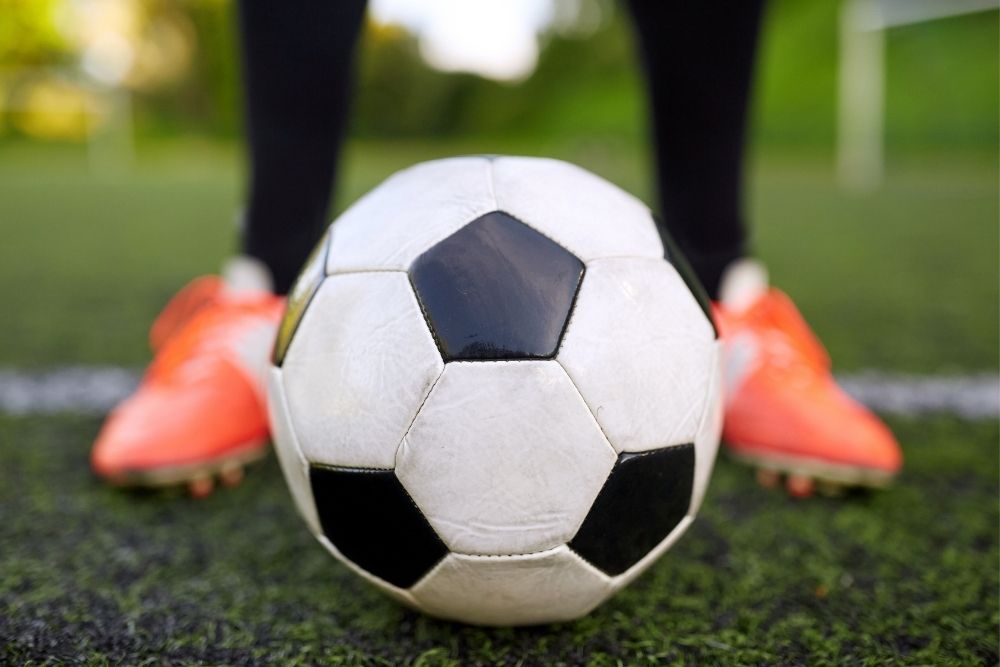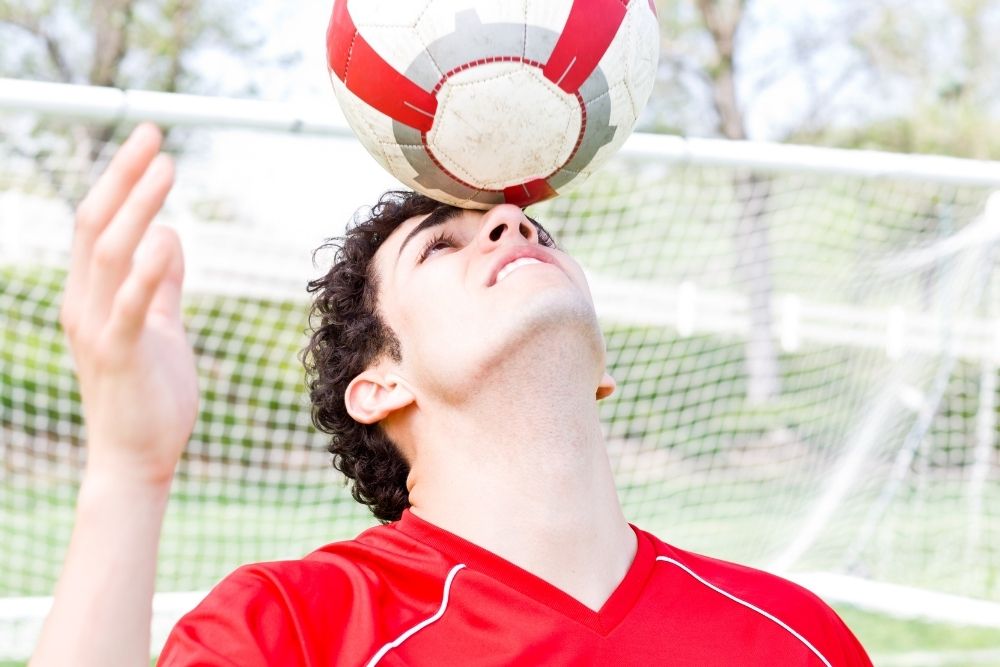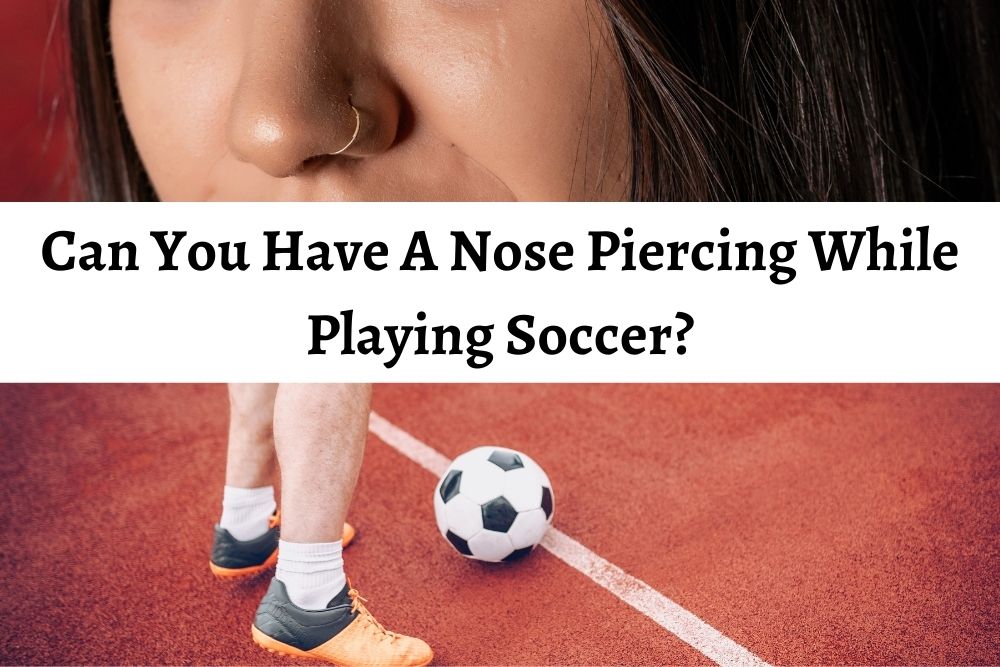Nose piercing is the piercing of the nose cartilage to wear jewelry. It is the third most common variety of piercing aside from tongue piercing and earlobe piercing.
Nose piercings date back 4,000 to 5,000 years in history with the first records in the Middle East. Piercing the nose became popular in 16th century Asia mostly among Indian women after it was spread by the Moghul Emperors.
Today, nose piercing has migrated from Asia to become a trend in most parts of the world. From the Caribbean, UK, Kenya, and the U.S. to name a few, people want to have a feel. Sportspeople are not left out of the bandwagon although not all sports allow them.
Soccer players these days experiment freely with their looks from hairstyles to their expensive designer clothes, they all want to look unique. Some even adorn their ear lobes with expensive earrings and diamond studs.
Playing a contact sport and getting a piercing may be very risky because contact sports record a lot of accidents due to their rough nature. For sports that prohibit piercings, removing and replacing them at the end of each game might seem problematic.
Read more:
Quick Navigation
- Can you have a nose piercing while playing soccer?
- 1. Consider your next career goals
- 2. Talk to people with nose piercing
- 3. Don’t let telltales freak you out
- 4. Choose the right type of nose piercing
- 5. Get over your fear of needles
- 6. Aftercare
- 7. Healing Process
- 8. Lookout for infections
- 9. Learn how to remove nose piercings by yourself
- 10. Expect the unexpected
- Conclusion
Can you have a nose piercing while playing soccer?
Before getting a nose piercing as a sportsperson, you must first of all check if the rules of the sport you are into allows it.
According to the rules of soccer, a player can wear any auxiliary item as long as it is declared safe by the referee. Apart from restricting the use of jewelry, protective equipment is also properly checked before a game.
Some soccer players have studs or nose rings that they remove during games and only use in their day-to-day life. Nose piercings are barred from soccer because they are dangerous to other players in the field as well as the player wearing them.
IFAB Laws of the Game even goes as far as stating that covering a piece of jewelry with tape is not permitted in soccer. Banning the use of jewelry in soccer might seem harsh but it has proved effective in preventing avoidable accidents.
Now that you clearly understand that the rules of soccer don’t allow the use of nose piercings, let’s enlighten you more about other important facets of this practice in case you have plans of getting a piercing or two after your soccer career.

The tips listed below will guide you in making worthwhile nose piercing decisions. Some of the tips listed below including the risk of infection and possible bleeding are some of the reasons why nose piercing is not allowed for soccer players while playing soccer.
1. Consider your next career goals
Most soccer players don’t just retire to live entirely on the salary they earned playing soccer; they explore other professions. Before accepting to get a nose piercing after your soccer career, you must first make research to know if your next career option allows facial piercings.
Even though they are tolerable right now in the career path you are interested in, would they still be acceptable 5 to 10 years later? Make thorough research and avoid the “shoot first, ask questions later” attitude.
2. Talk to people with nose piercing
Don’t hesitate to ask nose-piercing-related questions when you come in contact with people having them. Talking with others exposes you to more information and makes you more confident about the decision you are about to make.
Calling your local piercing shops to make inquiries is also a welcome idea. Taking these steps will help make your journey to the piercing shop less frightening.
3. Don’t let telltales freak you out
Everything outside the ordinary has an urban legend surrounding it—and nose piercings aren’t an exception. Some people believe nose piercings can cause nerve damage, migraines, and serious facial scars.
Others believe they are rebellious and occultic like every other form of body modification in existence. These analogies shouldn’t deter you from getting a nose piercing as long as you have properly done your research.

4. Choose the right type of nose piercing
Just like every other option with multiple choices, selecting a nose piercing might be harder than you imagine. Selecting a type of nose piercing depends on the part of the nose you intend to pierce.
Some common types of nose piercings include:
- Septum piercing
- Nasallang piercing
- Septril piercing
- Bridge or surface piercing
- Vertical tip piercing
- High nostril piercing
- Nostril piercing
In case you are unable to pick one from the list, piercers are proficient at helping you make the best choice.
5. Get over your fear of needles
It’s a common fact that most people never outgrow their fear of needles—and this fear is not peculiar to any gender. Both the masculine and feminine gender have people who wouldn’t consciously allow anything pointy to stick into their skin even if it will save their life.
Don’t approach a piercer for a nose piercing until you are comfortable with the fact that you are getting pierced. Nose piercing might even be an assurance that you have finally grown above your fear of needles.
6. Aftercare
Some people may buy online recommended aftercare products before getting a nose piercing which is ok but not advisable. Your piercers should be the most suitable candidate giving you professional aftercare tips and product recommendations.
7. Healing Process
Nose piercings take about 3 to 4 months to completely heal depending on your body’s healing rate. Being careless about aftercare can increase the risks of infection and prolong the healing period.
When piercings aren’t properly healed, they are usually very painful and might cause regular bleeding. If you encounter complications during your healing process, you must go back to your piercer for appropriate assistance.
8. Lookout for infections
The healing process can be demanding sometimes. You must expect a lot of crusting, bleeding, and mild oozing even though the gross cleaning procedure also feels uncomfortable.
Taking proper care of your piercings will grossly reduce your risks of getting infected although some people are allergic to metals. Contact the piercer as soon as you notice something is out of place, they will refer you to a doctor if need be.
9. Learn how to remove nose piercings by yourself
In case you want to attend an event where having a nose piercing may seem inappropriate, learning how to detach it from your nose will save you a lot of time and stress.
If you get tired of having them on, probably in your 40’s or 50’s, you can take them out by yourself and continue to clean the hole to prevent infections.
10. Expect the unexpected
Things don’t always go as planned in life and the same applies to piercings which might go south sometimes. Before getting a piercing, you must be ready for anything and everything that comes afterward.
Conclusion

If you insist on getting a nose piercing as a soccer player, you must make sure not to bring it to the field when you have a match because rules must be obeyed as long as you are playing under a team.
The biggest known risk connected with nose piercings is the high risk of reactions and allergies from nose accessories. You must know your triggers and avoid them.
Hi there, I’m Jay.
Soccer is everything in my life! My friends and I have created this blog with all our enthusiasm, passion, and understanding after years of playing pro soccer. Hope you will enjoy it!
